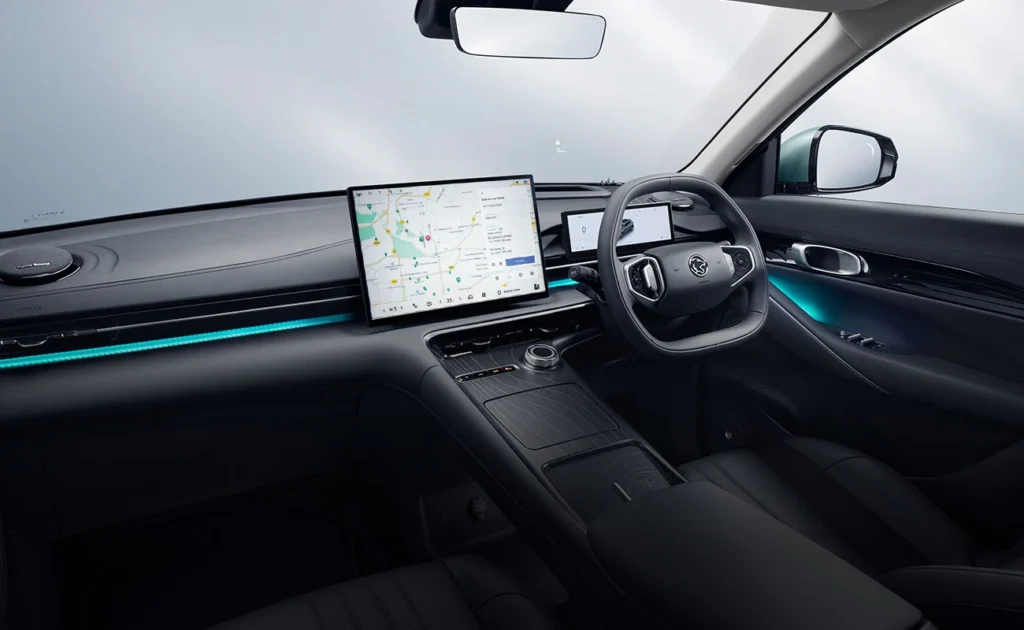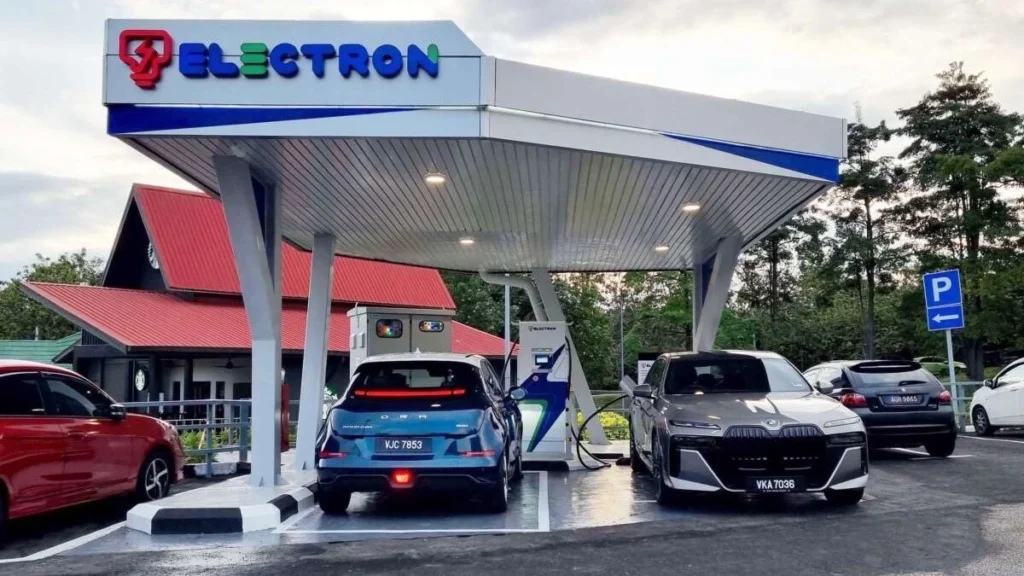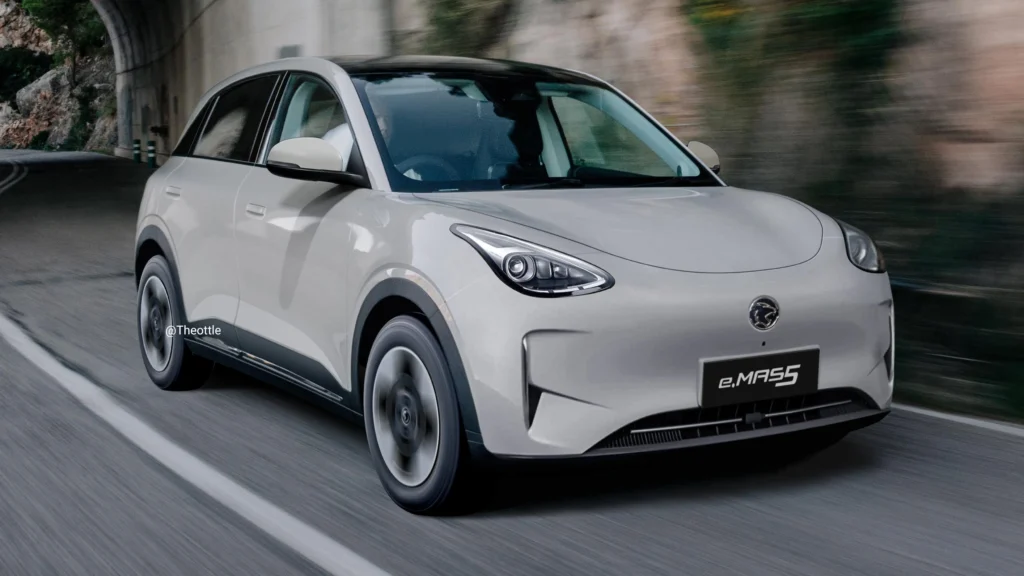The Proton eMAS 7 is officially Malaysia’s best-selling EV in 2025, and for good reason. It’s the car that has made electric driving feel achievable for the average Malaysian household. Affordable pricing, useful real-world range, and a cabin packed with modern tech are only part of the story. What really sets it apart is Proton’s plan to assemble the eMAS 7 locally at its brand-new EV factory in Tanjung Malim, proving that this isn’t just a one-off project but the start of a new chapter for Malaysia’s car industry along with the eMAS 5.
- Why the eMAS 7 Stands Out
- Variants and Specs
- Inside the Cabin
- Safety and Driver Assistance
- CKD and Proton’s New EV Factory
- What Ownership Looks Like
- Charging, range, and real-world use
- Ownership costs in Malaysia
- Which Variant Should You Buy?
- Proton eMAS 7 vs Competitors
- Frequently Asked Questions (FAQs)
- Final Thoughts
Why the eMAS 7 Stands Out
Price to spec ratio. The Prime starts at RM105,800 and the Premium at RM119,800, on-the-road without insurance. That price undercuts many rivals yet still brings a large battery, proven LFP chemistry, and Level 2 driver assistance. Proton kept the lower “launch” pricing as a permanent sticker, which removed urgency and built steady demand.
Right size for Malaysian buyers. The eMAS 7 is a C-segment SUV. You get space for five, a 461-litre boot, and extra under-floor storage. Wheelbase is 2,750 mm, length is 4,615 mm, width is 1,901 mm, and height is 1,670 mm. It feels like an X70 class vehicle, but with EV silence and instant torque.
Charging that fits daily life. Most owners charge at home on 11 kW AC. If you need a splash-and-go, DC fast charging adds charge from 30 to 80 percent in about 20 minutes. The built-in charging map covers most Malaysian CPOs, so you can see plug status and prices on the main screen.
Updates and fixes over the air. Proton added Apple CarPlay via OTA in August 2025 and also bundled a free tonneau cover for new and existing owners. The small fixes show Proton is listening to early buyers.
Proven demand. Proton delivered 4,003 units in the first half of 2025. It continues to lead EV sales.
Variants and Specs
Every eMAS 7 on the road today uses the same single front-mounted electric motor producing 218 PS and 320 Nm of torque. It feels quick off the line, hitting 0–100 km/h in just 6.9 seconds, but it isn’t twitchy or difficult to handle. Top speed is limited to 175 km/h, more than enough for our highways.
Where the two variants differ is in their batteries. The Prime comes with a 49.5 kWh LFP battery, good for 345 km on the WLTP cycle. The Premium steps up to a 60.2 kWh pack with 410 km WLTP range. Both support 11 kW AC charging, which means an overnight top-up is simple if you install a wallbox at home. On a fast charger, the Prime accepts up to 80 kW, while the Premium can handle 100 kW, taking you from 30 to 80 percent in around 20 minutes.
It’s worth noting that Proton uses LFP (lithium iron phosphate) chemistry, which favors durability and stability in hot climates like ours. That should give peace of mind to drivers worried about long-term battery health.

Inside the Cabin
Step into the eMAS 7 and you’ll notice that Proton didn’t cut corners on the interior. Both versions come with a huge 15.4-inch central screen paired with a 10.2-inch digital cluster. The system runs on Flyme Auto, which has been improving steadily through over-the-air updates. In fact, Proton pushed out Apple CarPlay support in August 2025, responding to one of the most common requests from buyers. Android Auto is expected to follow.
The Premium trim, priced at RM119,800, adds a lot of comfort upgrades that families will appreciate. Think ventilated front seats, a panoramic glass roof, a powered tailgate, and a 16-speaker audio system that makes long drives a lot more enjoyable. You also get extras like a head-up display and ambient lighting, which give it a more premium feel than its modest price tag suggests. If you’re shopping for floormats to protect that interior, check out our comparison on the 5 best brands.
Safety and Driver Assistance
Safety is another strong selling point. The eMAS 7 ships with Level 2 driver assistance features even in the base Prime variant. That means adaptive cruise control, lane-keeping, emergency braking, and a 360-degree camera are all included. For families, knowing that these features are standard provides reassurance. The car also earned a five-star ASEAN NCAP rating, which helps cement its credibility against more expensive imported rivals.

CKD and Proton’s New EV Factory
Proton is building a dedicated EV plant at Tanjung Malim, with an initial 20,000-unit annual capacity in phase one. The eMAS 7 will be the first CKD model from this factory. Construction began in February 2025, with completion targeted by end-2025.
As the plant neared completion in August 2025, Proton said CKD production of the eMAS 7 would start in September 2025. This will shift the model from CBU import to local assembly. Expect stronger parts localization over time.
Why CKD matters: CKD can help stabilize supply, improve aftersales support, and create room for spec updates. There may also be pricing headroom because Malaysia allows CKD EVs below RM100k, while CBU EVs had to observe a higher floor. Proton has hinted at this possibility without making promises.
What Ownership Looks Like
One big plus for buyers right now is road tax exemption until the end of 2025. From January 2026, Malaysia’s new EV road tax structure kicks in, but the eMAS 7’s 160 kW motor output puts it in a relatively affordable band. Insurance, as always, depends on your age and driving record, but estimates show the Premium variant will be priced competitively against petrol SUVs of similar size.
Charging costs depend on your habits. If you plug in at home, you’ll enjoy the lowest running costs, paying just a fraction of what petrol would cost for the same mileage. Public AC charging remains affordable, while DC fast charging is best saved for longer trips.
And for peace of mind, Proton backs the car with a 6-year unlimited mileage warranty, plus an 8-year/160,000 km warranty for the battery and high-voltage components.
Charging, range, and real-world use
Home charging: With a 7 to 11 kW wallbox, most owners top up overnight (only takes 5-8 hours depending on the wallbox). The Prime’s smaller battery fills quicker and weighs less, which helps ride comfort and efficiency.
Public charging: The Premium accepts up to 100 kW DC, the Prime up to 80 kW. Both go from 30 to 80 percent in about 20 minutes. Plan stops with the live charging map built into the infotainment. Check out our Ultimate Guide to Charging your EV in Malaysia to learn more.
Range picks:
- If you do many short trips and charge at home. Choose Prime.
- If you do regular highway runs or prefer fewer stops. Choose Premium.
Ownership costs in Malaysia
Road tax: RM0 until 31 December 2025. From 1 January 2026, Malaysia’s new EV road-tax structure applies and is lower than the old scheme. Rates depend on motor output in kW. The eMAS 7’s 160 kW output falls in the 100 to 210 kW band, which is modest compared to many performance EVs.
Insurance: Premium varies by driver profile. CarBase lists an estimate for the Premium variant to help you budget. RM3,466 annually.
Maintenance: Only RM2,500 over a period of 10 years. That’s RM250 a year.
Charging cost: Home charging is the cheapest option. Public AC is affordable. DC fast charging costs more and should be used for trips, not daily top-ups. Let’s say estimated monthly mileage of 3,000km at 6km per kWh, and a household electricity tariff of RM0.54/kWh. This will equal a monthly cost of RM270.
All in all, monthly ownership costs roughly RM2,000 once you include the costs above and your monthly loan payments.
Which Variant Should You Buy?
If you’re mainly commuting and have access to home charging, the Prime at RM105,800 is hard to beat. The 345 km WLTP range is plenty for daily use, and the smaller wheels give it a slightly cushier ride.
If you travel longer distances or want a more luxurious experience, the Premium at RM119,800 is the smarter choice. The extra 65 km of range makes highway driving more comfortable, and the extra kit — from ventilated seats to the panoramic roof — turns it into a more family-friendly package.
Proton eMAS 7 vs Competitors
| Model | Price | Range (WLTP) | Powertrain |
|---|---|---|---|
| Proton eMAS 7 | RM105k–119k | 360–410 km | FWD |
| BYD Atto 3 | RM118k | 410 km | FWD |
| Tesla Model 3 RWD | RM189k | 455 km | RWD |
| Hyundai Kona EV | RM180k+ | 400 km | FWD |
The eMAS 7 clearly wins on price and local support, making it the go-to choice for families entering the EV space.
Frequently Asked Questions (FAQs)
Final Thoughts
The Proton eMAS 7 has hit the sweet spot for Malaysia. It proves that you don’t need to spend over RM150,000 to get a capable, family-sized EV with modern features and solid range. By committing to local CKD assembly in Tanjung Malim, Proton is also sending a message: this isn’t just about one car, but about building Malaysia’s EV future.
For buyers who’ve been waiting for an EV that fits their lifestyle and budget, the eMAS 7 is the answer. It’s no surprise that it’s now the country’s best-selling electric vehicle.


